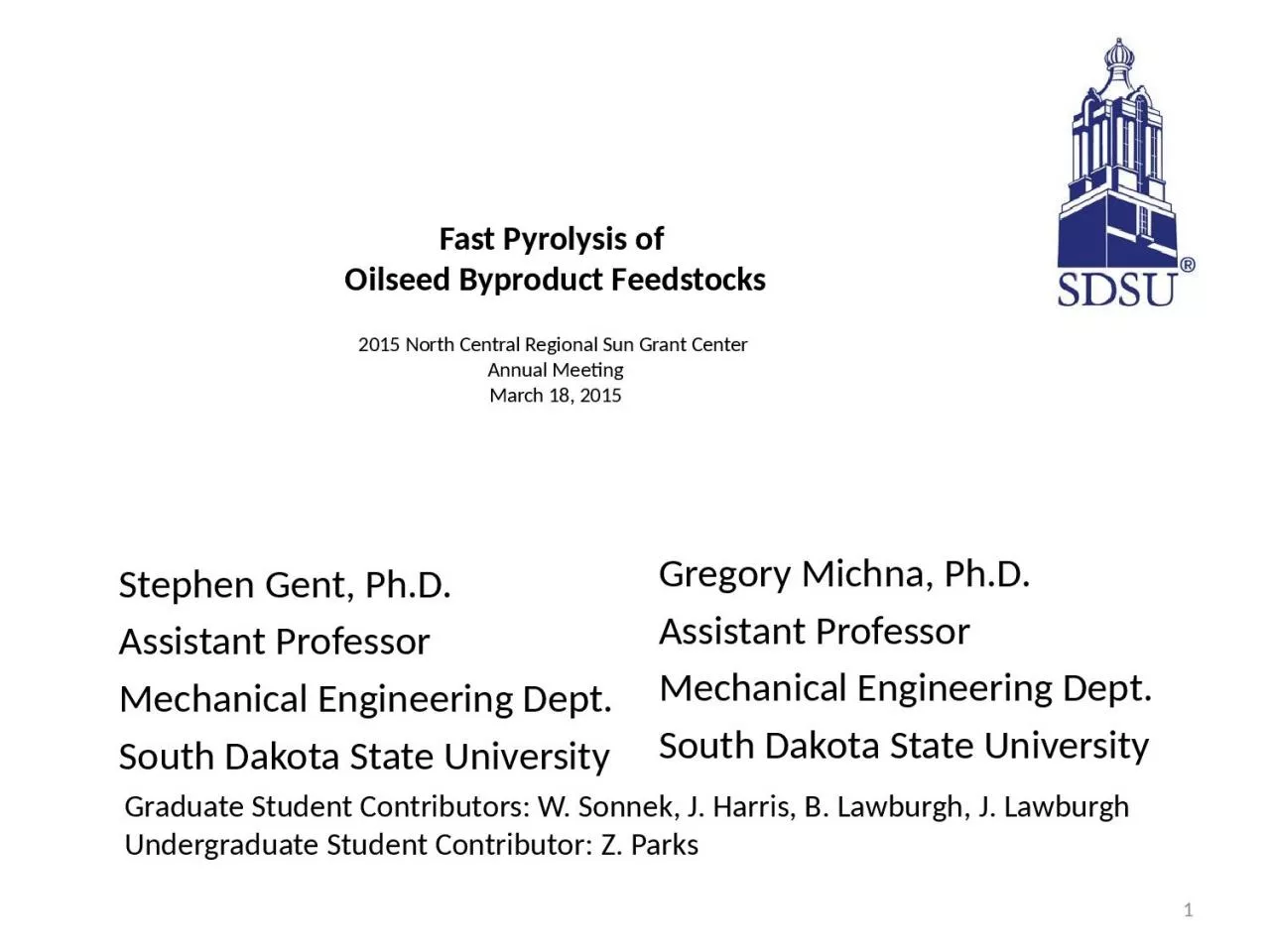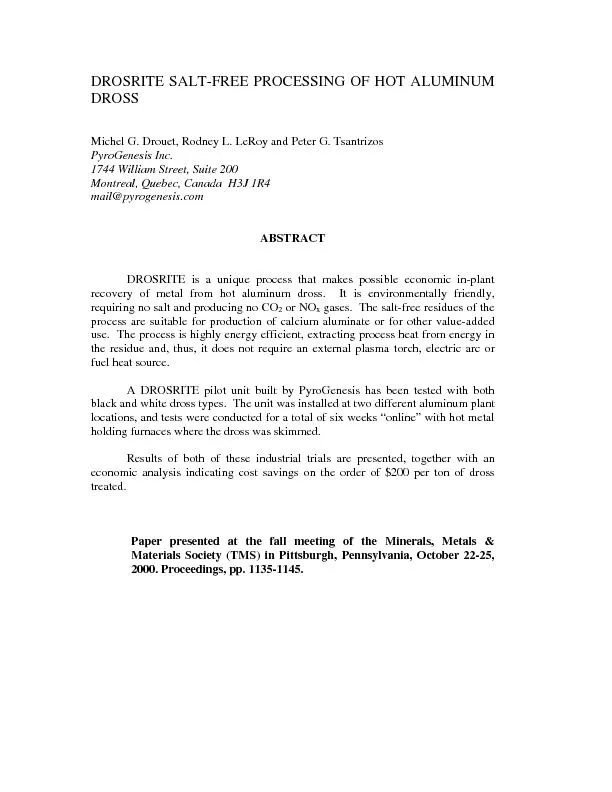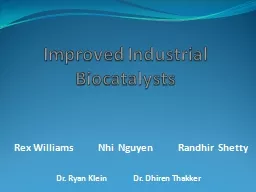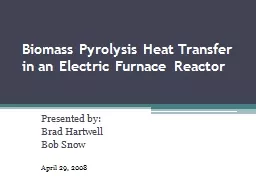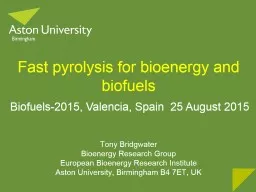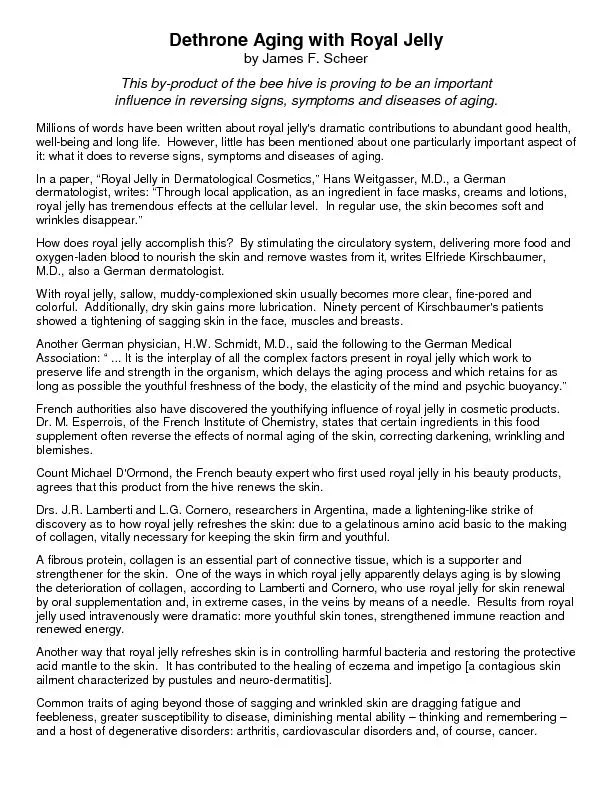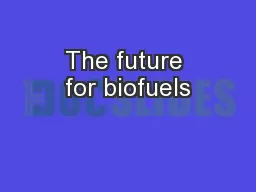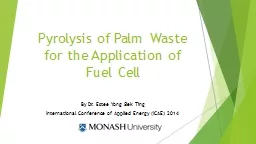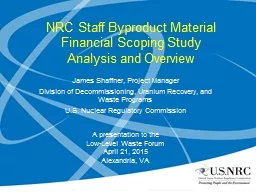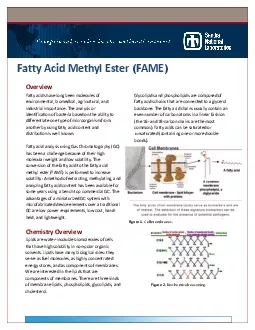PPT-Fast Pyrolysis of Oilseed Byproduct Feedstocks
Author : ximena | Published Date : 2024-01-13
2015 North Central Regional Sun Grant Center Annual Meeting March 18 2015 Stephen Gent PhD Assistant Professor Mechanical Engineering Dept South Dakota State University
Presentation Embed Code
Download Presentation
Download Presentation The PPT/PDF document "Fast Pyrolysis of Oilseed Byproduct Fee..." is the property of its rightful owner. Permission is granted to download and print the materials on this website for personal, non-commercial use only, and to display it on your personal computer provided you do not modify the materials and that you retain all copyright notices contained in the materials. By downloading content from our website, you accept the terms of this agreement.
Fast Pyrolysis of Oilseed Byproduct Feedstocks: Transcript
Download Rules Of Document
"Fast Pyrolysis of Oilseed Byproduct Feedstocks"The content belongs to its owner. You may download and print it for personal use, without modification, and keep all copyright notices. By downloading, you agree to these terms.
Related Documents

